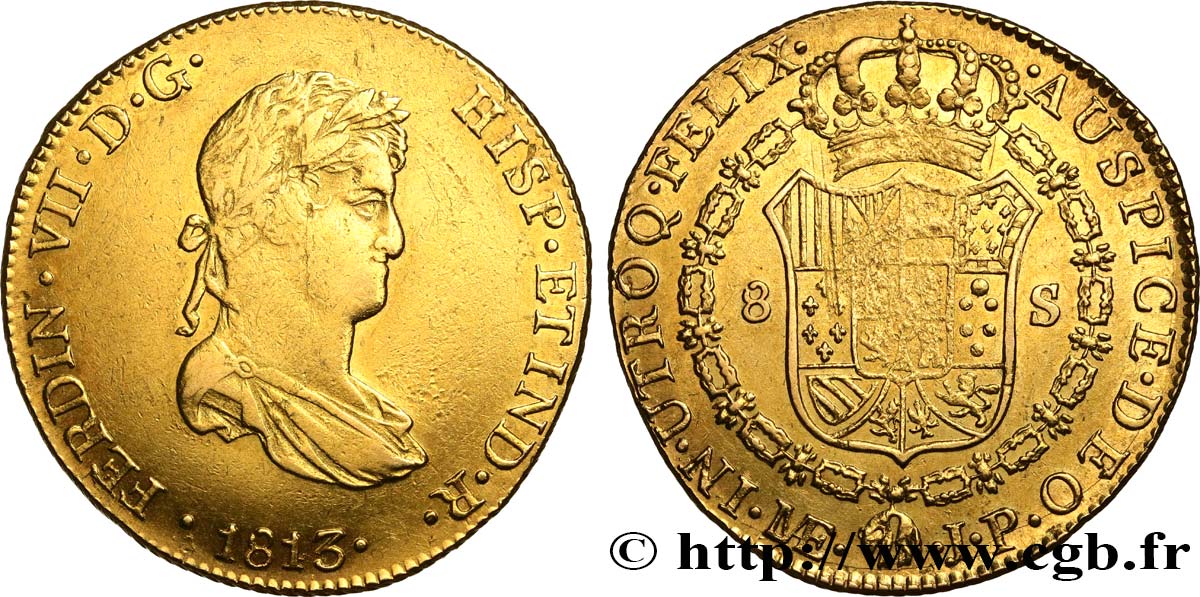正面
正面的文字 FERDIN. VII. D. G. - HISP. ET IND. R..
正面的说明书 Buste drapé, tête laurée de Ferdinand VII à droite ; au-dessous .1813..
正面的翻译 (Ferdinand VII par la grâce de Dieu, roi d’Espagne et des Indes).
背面
背面的文字 .AUSPICE. DEO. / (MONOGRAMME LIMAE). - .JP. / .IN. UTROQ. FELIX..
背面的说明书 Écu couronné à multiples quartiers accosté de 8-S, le tout contenu dans l’ordre de Saint Michel.
背面的翻译 (Sous le regard de Dieu, dans un monde et l'autre).
历史细节
PERU - KINGDOM OF SPAIN AND INDIES - FERDINAND VII
(1808 then 1814-1833)
Son of Charles IV and Marie-Louise of Parma, he became king after the Aranjuez uprising which forced Charles IV to abdicate (March 19, 1808). After the occupation of Madrid by the troops of Murat, he must renounce the throne on May 10, 1808. Interned until 1814, he returned and abolished the liberal Constitution of 1812. He could not prevent the collapse of the Spanish Empire and the Riego revolt of 1820 forced him to accept a liberal ministry and restore the Constitution of 1812. In reality, he encouraged the royalist elements and thanks to the French expedition of the Duke of Angoulême, he was able to restore absolute power in 1823.. Peru's emancipation movement begins with the uprising of Spanish landowners. The Argentinian José de San Martín and the Venezuelan Simón Bolívar lead the rebel troops. On July 28, 1821, San Martín declared Peru's independence from Spain.. Emancipation became effective in December 1824, when General Antonio José Sucre defeated the Spanish on December 9, 1824 at the Battle of Ayacucho. After this victory, a split separated the country into Upper Peru, which remained faithful to Bolivar, which took the name of Bolivia, and Lower Peru, which became the current Peru..








 对产品描述纠错
对产品描述纠错 打印
打印 分享我的选择
分享我的选择 提问
提问 Consign / sell
Consign / sell




